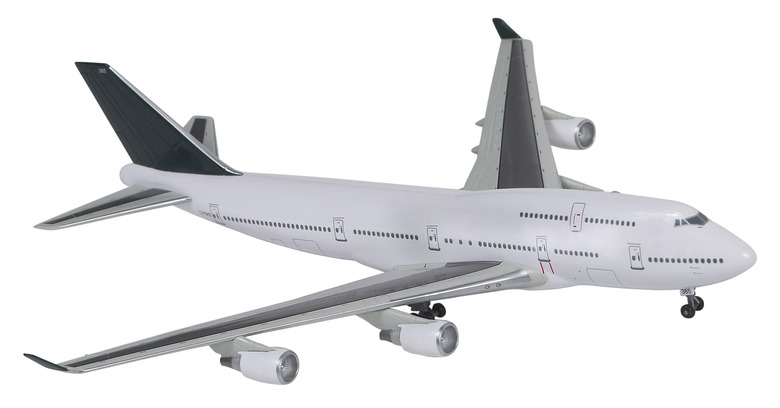How To Calculate Taper Ratio
Things Needed
- Measuring tape
- Or manufacturer's schematics
- Calculator
Aircraft can have one of several different shapes of wings, depending on the size and weight of the aircraft, including straight, swept, and delta wings. Tapering refers to a change in wing width from root to tip. Tapered wings are attached at the fuselage, or body of the airplane, and gradually decrease in width from the root to the tip of the wing. The calculation for taper ratio is a major consideration in airplane wing design and performance. One of the goals of an airplane designer or engineer is to keep the taper ratio low without causing plane stalling or cruise lift variations. Taper ratio calculations, along with those for chord, sweep, and span are used to anticipate the aerodynamic properties of a plane's wing. You can determine a wing's taper ratio using simple math.
Step 1
Use a tape measure or consult the manufacturer's schematics to determine the value for C tip. C tip refers to the measurement of the width of the tip, or end, of the wing from front to back. When using schematics, many manufacturers will list the measurements in feet or meters. Convert the measurement to inches for a more precise taper ratio calculation.
Step 2
Use the tape measure to determine the value for C root. C root is the measurement of the width of the root of the wing from front to back. The root of the wing is the widest point, where the wing meets the fuselage. Take the wing root measurement as close to the body of the plane as possible. When unable to measure the plane directly, consult the manufacturer's schematics to obtain the most accurate measurements.
Step 3
Apply the measurements of the tip and root of the wing to the formula: taper ratio = C tip / C root. Use as an example a plane with a wing root measurement of 20 feet, or 240 inches, and a wing tip measurement of 6 feet, or 72 inches. The formula then becomes: 72/240 = 0.3 taper ratio. The taper ratio for most commercial jets is between 0.3 and 0.4, with an 0.4 taper ratio being considered ideal.
TL;DR (Too Long; Didn't Read)
Use a uniform unit of measurement when evaluating an aircraft to avoid discrepancies in calculations. Width measurements used to calculate taper ratio can be obtained by measuring the wing either from the top or the bottom. Many airplane manufacturers, such as Boeing, list basic measurements and schematics for current aircraft models on their websites, including measurements for the wings of their planes.
Warning
Higher taper ratio plane wings may contribute to the plane to become unbalanced when in flight because of an unequal distribution of weight. Do not use winglet measurements, where the wing bends up or down at the end, as the C tip measurement. Measure the wing width at the bend to determine C tip.
Cite This Article
MLA
Swain, Kristin. "How To Calculate Taper Ratio" sciencing.com, https://www.sciencing.com/how-10054262-calculate-taper-ratio/. 7 August 2017.
APA
Swain, Kristin. (2017, August 7). How To Calculate Taper Ratio. sciencing.com. Retrieved from https://www.sciencing.com/how-10054262-calculate-taper-ratio/
Chicago
Swain, Kristin. How To Calculate Taper Ratio last modified March 24, 2022. https://www.sciencing.com/how-10054262-calculate-taper-ratio/
